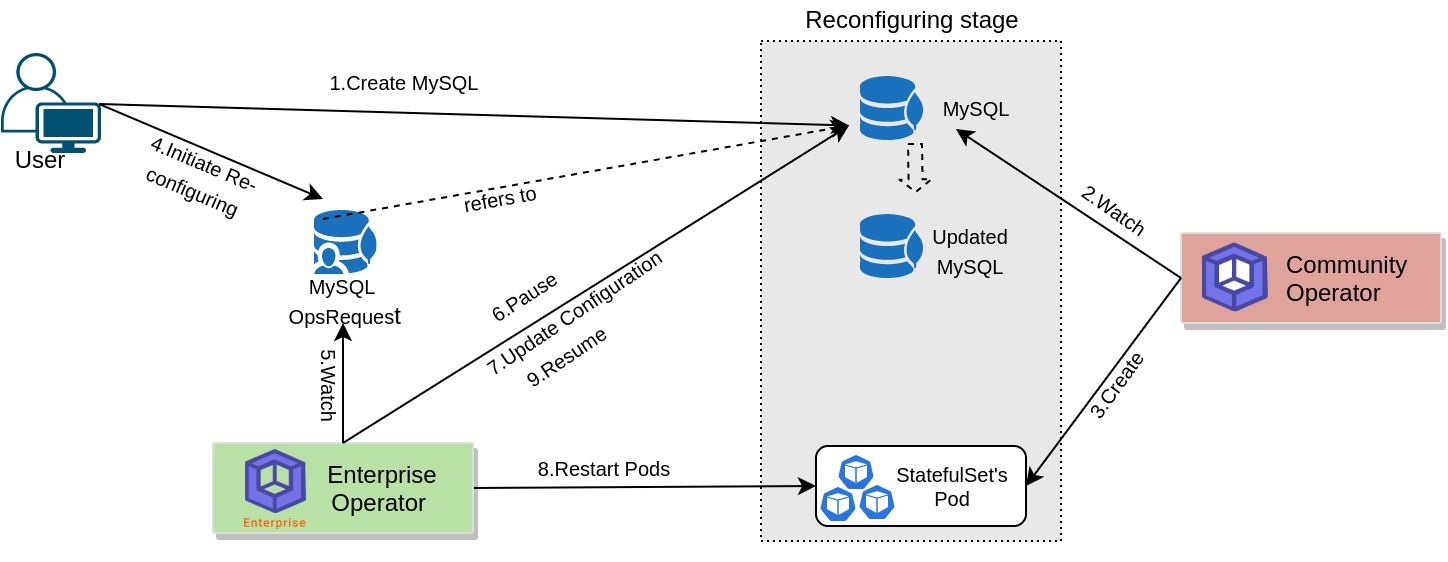You are looking at the documentation of a prior release. To read the documentation of the latest release, please
visit here.
New to KubeDB? Please start here.
Reconfiguring MySQL
This guide will give an overview on how KubeDB Enterprise operator reconfigures MySQL.
Before You Begin
- You should be familiar with the following
KubeDBconcepts:
How Reconfiguring MySQL Process Works
The following diagram shows how KubeDB Enterprise operator reconfigures MySQL database components. Open the image in a new tab to see the enlarged version.

The Reconfiguring MySQL process consists of the following steps:
At first, a user creates a
MySQLCustom Resource (CR).KubeDBCommunity operator watches theMySQLCR.When the operator finds a
MySQLCR, it creates required number ofStatefulSetsand related necessary stuff like secrets, services, etc.Then, in order to reconfigure the
MySQLstandalone or cluster the user creates aMySQLOpsRequestCR with desired information.KubeDBEnterprise operator watches theMySQLOpsRequestCR.When it finds a
MySQLOpsRequestCR, it halts theMySQLobject which is referred from theMySQLOpsRequest. So, theKubeDBCommunity operator doesn’t perform any operations on theMySQLobject during the reconfiguring process.Then the
KubeDBEnterprise operator will replace the existing configuration with the new configuration provided or merge the new configuration with the existing configuration according to theMySQLOpsRequestCR.Then the
KubeDBEnterprise operator will restart the related StatefulSet Pods so that they restart with the new configuration defined in theMySQLOpsRequestCR.After the successful reconfiguring of the
MySQL, theKubeDBEnterprise operator resumes theMySQLobject so that theKubeDBCommunity operator resumes its usual operations.
In the next docs, we are going to show a step by step guide on reconfiguring MySQL database components using MySQLOpsRequest CRD.






























